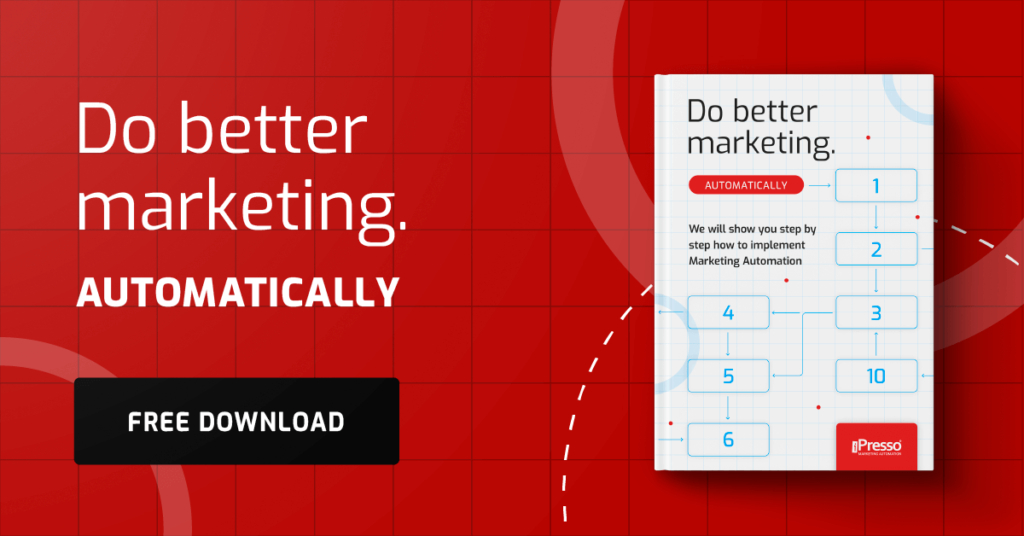Automate your emails and save yourself hours of work!

Some emails need to be written and sent manually, especially if there is only one recipient. However, in many cases, marketing and sales-related emails can be automated. And with a good marketing automation platform, you can easily automate your email marketing! Let’s have a look at how you can do so.
In the not-too-distant past, many people were predicting the end of email as a marketing tool. However, the reality verified these predictions. In June 2024, eMarketer conducted a study that shows that email is still the number-one preferred communication channel, surpassing the next on the list by over 10 percent:
Image source: https://www.emarketer.com/content/consumers-worldwide-prefer-emails-brands
The conclusion is obvious – you should keep investing in email marketing because that’s what your customers want from you. And marketing automation can help you with that!
The benefits of email marketing automation
When it comes to email marketing automation, there are at least four major benefits you should consider:
- Time efficiency: With email marketing automation, you can easily automate repetitive tasks, such as creating the same email over and over again and sending it to hundreds of recipients. This way, you can both save time and ensure consistent communication.
- Personalization and segmentation: With marketing automation, you can send targeted emails based on user behavior, characteristics, or shopping preferences.
- Lead nurturing: You can use email marketing to guide your prospects through the sales funnel 100% on auto-pilot.
- Scalability: Email marketing automation can be used whether you have 100 or 100,000 subscribers in your database.
How to use email marketing automation – a lead generation example
There are many use cases for email marketing, but for many companies, lead generation and nurturing are the most important uses that allow them to grow their business and acquire new customers. Here’s how it can go:
You want to attract more leads to your business. To do so, you decide to create a lead magnet and a short landing page where people can sign up for it by sharing their email addresses with you. When someone downloads your freebie, they are automatically added to your email subscribers’ database. This is where email marketing steps in the game.
You can create whole communication scenarios where people receive messages from you on auto-pilot. The first automated email can be sent just after someone signs up for your lead magnet. You can send them an email with the link to download your freebie and offer a free consultation or free trial access.
After two or three days, you send another automated email, this time containing some additional tips & tricks for your prospects and another invitation to book a free consultation with your team. If a person responds to this email, the communication scenario stops so that your employees can reach out to such a person and talk to them one-on-one.
However, if such a person doesn’t reply, you can set the third message to be sent another three or four days after the second message. The third message can contain a short reminder, possibly with an additional discount, to encourage more people to reach out.
Now, imagine, you need to create and send those emails manually every single time. It would just be a nightmare! You would have to track when someone signed up for your lead magnet and then count the days to send the second and third messages. Even if that’s doable with 20 or 30 subscribers, it’s certainly not doable with hundreds of them.
At some point, you simply need email marketing automation if you want to use this tool effectively!
What to consider when planning email marketing automation
A successful email marketing automation requires six elements that will help you engage your customers, close more deals, and build good long-term relations with your audience. Of course, you don’t need to include all six elements in every email you send but try to incorporate all of them in your overall email marketing strategy.
Segment your recipients
With advanced customer segmentation, you can make sure that each recipient receives relevant content and offers that are tailored to their interests. By analyzing behavior, preferences, and purchase history, you can create different campaigns that resonate with different audience segments. This way, you can improve engagement rates, reduce unsubscribe rates, and increase conversions. Segmentation also allows for A/B testing, which is also a good idea!
Add special offers
Sending special offers (e.g., for such occasions as Black Friday, birthdays, or holidays) will help you get more customers and improve customer loyalty. Discounts make customers feel valued and encourage repeat purchases. Also, you can think about time-sensitive promotions in order to create a sense of urgency and motivate your customers to take action quickly (ideally, just after receiving the email).
Personalized communication
You should always personalize emails based on user behavior and previous activity. This is where tracking browsing history, abandoned carts, or past interactions is crucial as it allows you to send recommendations that match their profile. Additionally, personalized subject lines and dynamic content make emails feel more natural and can increase OR (open rates).
Post-purchase support
The role of email marketing doesn’t end with a purchase. You can use automated follow-up emails after a purchase to build positive long-term relations with your audience (and perhaps encourage them to buy even more!). Here, you can use order confirmations, shipping updates, and product usage tips. Such messages help you build trust and win customer engagement. If you want to take this one step further, you can think of providing relevant content, such as how-to guides or maintenance advice.
Send product recommendations
Use automated product recommendations to keep your customers engaged and gradually encourage them to buy more from you. Product recommendations are most effective when they are based on the analysis of previous orders and the browsing behavior of each customer. This way, you can also benefit from cross-selling and upselling. Also, keep in mind that personalized recommendations will help you build brand loyalty and keep customers coming back.
Set automatic responders
Lastly, automated responses help you stay in touch with your audience when there’s no one in the office to answer incoming emails. Such responders can include the following elements:
- Acknowledging an inquiry (use your creativity to make a lasting impression)
- Providing additional product details
- Inviting feedback through surveys
- Redirecting communication to a virtual assistant
By using them, you can both build positive image of your brand and reduce the chances of losing potential customers. In some cases, you can even use them to guide your leads down the sales funnel by offering more relevant content or special deals.
Wrapping up: Use iPresso to automate your emails
As you can see, there are many benefits to email marketing automation. With this technology, you can:
- Save a lot of time and work
- Reach out to your customers in a timely manner
- Ensure consistent communication with your audience
- Distribute special offers more effectively
With iPresso, you get access to all the tools we mention in this article. With our marketing automation platform, you can create segmented customer bases that are perfect for personalization purposes. You can set up tailor-made communication flows that keep your customers in the sales funnel. And you can integrate email marketing with other tools that you use to get more clients (e.g., text messages and WhatsApp).
If you’d like to give our platform a shot, you can start today for free! We invite you to start your 30-day trial access today (you don’t need a credit card!). You can do so here. Send this short form to us, and we’ll guide you through the next steps!



